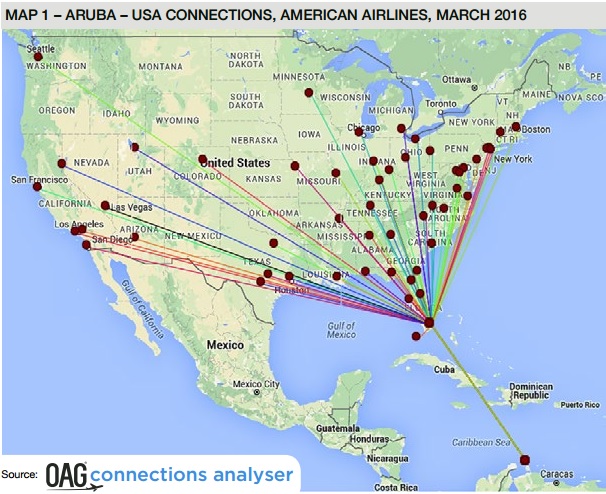With approval granted for numerous new air services to Havana, airports and tourist boards across the Caribbean are going to have to work harder than ever to maintain and develop air services, and build their islands as tourist destinations.
In its new report, ‘Staying Competitive in the Caribbean: Leveraging Air Travel Intelligence to Boost Tourism’, OAG uses a case study based on the Aruba market to show how schedule, traffic and yield data can be used in a variety of ways to ensure airports and tourist boards stay ahead of the game.
At a strategic level, airline schedule data can be used to compare an airports’ market position – capacity, destinations etc - with other airports. Manging risk means not being dependant on tourists from a single country or region market and digging into schedule data is a simple way to look at the changing profile of tourism source markets.
At a more tactical level, OAG’s schedule data enables airports and tourist boards to see what’s new. Which airlines are adding frequencies, or cutting back? Are connecting schedules working in both directions for passengers? Are better connections assisting a competitor destination in their reach for the passenger?
Traffic and yield data is equally valuable, especially when it shows the true origin of the airline passenger. For Aruba, many visitors connect via Miami so it’s important to know where they started their journey. Has marketing spend in those locations been effective? Are there large markets which could justify a non-stop service? Are some airlines achieving consistently higher fares on routes than other airlines. And are some destinations achieving higher fares with the same airline?
If you could know the answer to these questions, why wouldn’t you want to? The report concludes by describing some of the opportunities which Aruba has now and, in doing so, demonstrates the power of OAG data in air service development.
If you liked this post, you may also like:



